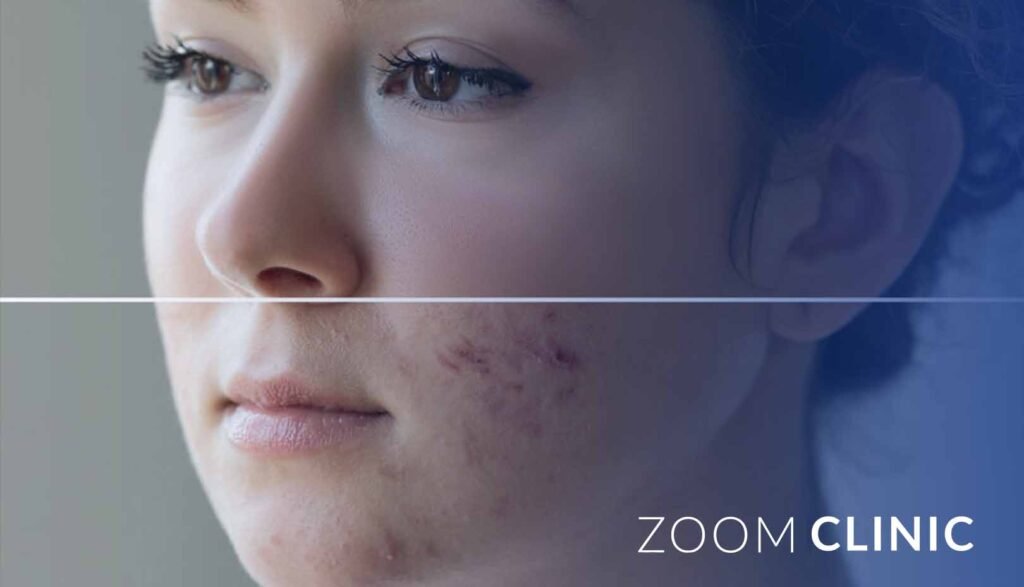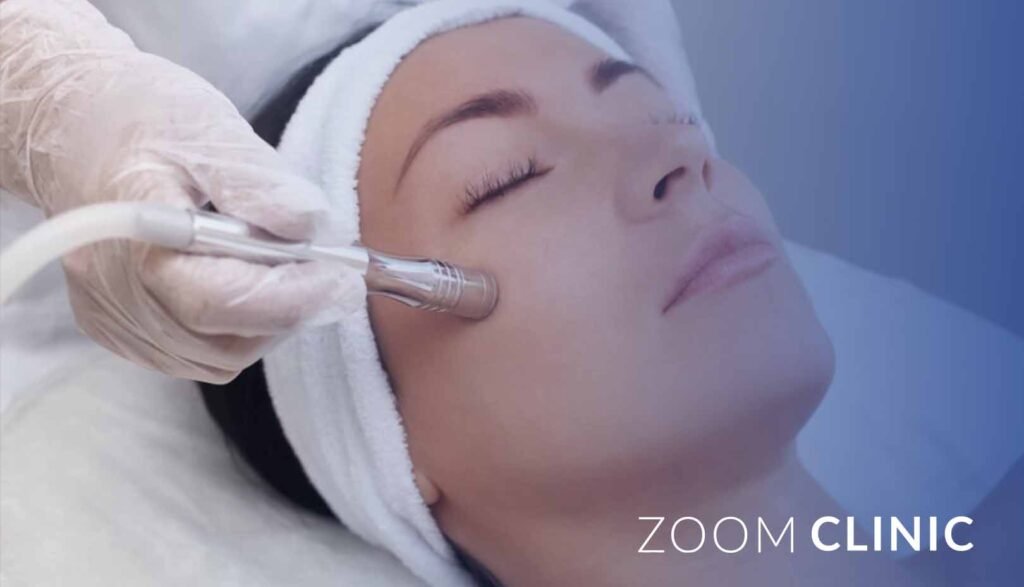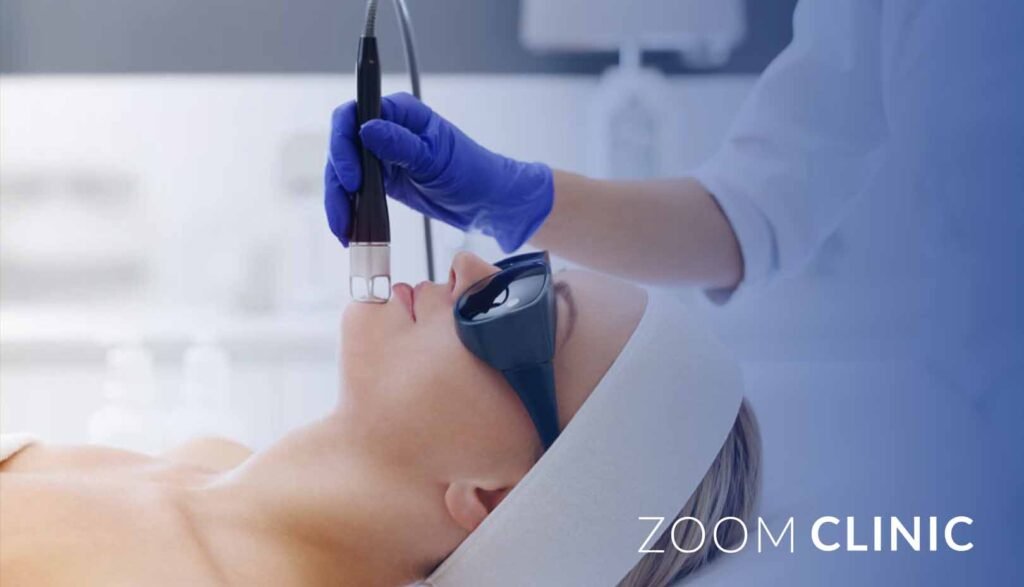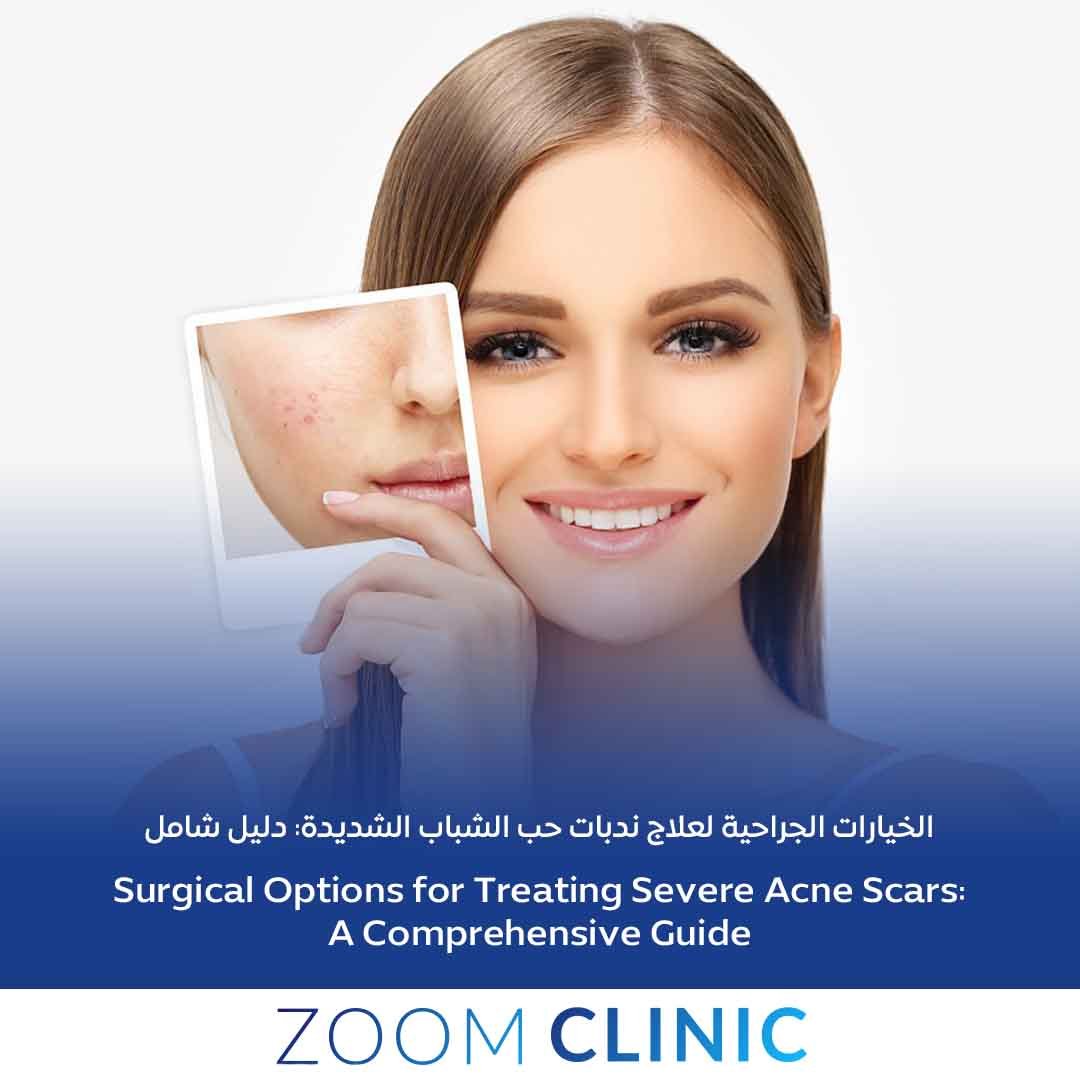Acne scars can be a lasting reminder of past breakouts, causing emotional and physical distress for many individuals.
Understanding the surgical options for treating severe acne scars provides patients with hope for smoother skin and improved self-confidence.
This guide explores the leading acne scar treatment methods, focusing on surgical procedures, laser therapies, and adjunctive treatments tailored to various acne scars and skin types.
Table of Content
Types of Acne Scars and Their Characteristics
Acne scars are broadly classified into two categories:
Atrophic Acne Scars: These are indented or depressed scars caused by tissue loss. They are further divided into:
- Ice Pick Scars: Deep, narrow scars that extend into the dermis.
- Boxcar Scars: Broad, shallow depressions with well-defined edges.
- Rolling Acne Scars: Wavy depressions caused by skin tethering to deeper structures.
- Hypertrophic Scars: Raised scars resulting from excess scar tissue formation, often occurring on the back and chest.
Post-Inflammatory Hyperpigmentation (PIH): Though not a true scar, PIH appears as darkened spots on the skin following acne.
Surgical Techniques for Acne Scar Treatment

1. Punch Excision and Punch Elevation
This technique is ideal for ice-pick scars and isolated scars. Surgeons meticulously remove the scar using a small punch tool, followed by suturing or grafting to promote smoother skin.
This precise approach ensures minimal damage to surrounding tissues, enhancing the aesthetic outcome. Patients often experience a significant improvement in skin texture, making it a preferred choice for targeted scar removal.
2. Subcision
Subcision addresses rolling scars by breaking the fibrous bands tethering the skin. This procedure encourages collagen formation, improving the appearance of wavy depressions. By releasing these bands, subcision allows the skin to rise, creating a smoother surface.
This technique is often complemented with fillers or laser treatments to enhance the overall results, offering a comprehensive approach to treating acne scars.
3. Dermal Grafting
For deeper scars, surgeons may use dermal fillers or tissue grafts to fill indented areas, restoring skin texture and volume. This technique helps achieve a more even skin surface and can benefit patients with extensive atrophic scars.
By carefully selecting the appropriate filler or graft material, surgeons can tailor the procedure to the patient’s specific needs, ensuring a natural and lasting enhancement of the skin’s appearance.
4. Trichloroacetic Acid Chemical Reconstruction (TCA CROSS)
This method targets ice-pick scars and superficial boxcar scars. A high concentration of trichloroacetic acid is applied to the scar to stimulate collagen remodeling and improve skin texture.
5. Excisional Surgery
For severe scars that do not respond to less invasive treatments, excisional surgery involves removing the scar and closing the wound with sutures. This method is often combined with other treatments for optimal results.
Laser Treatment and Energy-Based Modalities

1. Fractional Ablative Lasers
Fractional lasers, such as the Erbium YAG laser, target scarred skin by removing damaged layers and stimulating collagen induction therapy. These lasers are effective for atrophic scars and indented scars.
2. Laser Skin Resurfacing
This treatment smooths rolling scars, boxcar scars, and raised scars. It is suitable for various skin types, though darker skin requires cautious use to avoid pigmentation issues.
3. Non-Ablative Laser Therapy
Non-ablative lasers, while less aggressive, stimulate collagen production and improve the overall appearance of acne scar patients.
Chemical Peels and Adjunctive Treatments
1. Deep Chemical Peels
Glycolic acid peels and salicylic, mandelic acid peels exfoliate the skin, reducing the appearance of scars and improving texture. They remove the outermost layer of dead skin cells, promoting the regeneration of new skin.
Glycolic acid, an alpha hydroxy acid (AHA), penetrates the skin deeply, effectively targeting fine lines, pigmentation, and uneven texture. On the other hand, salicylic acid, a beta hydroxy acid (BHA), is oil-soluble, making it particularly effective for acne-prone skin by unclogging pores and reducing inflammation.
When combined with mandelic acid, which is gentler, the peel offers a balanced exfoliation suitable for sensitive skin types. Regular treatments can improve the skin’s clarity and smoothness, making these peels a valuable addition to an acne scar treatment regimen.
They are especially beneficial for those with mild to moderate scarring and are often used with other treatments like laser therapy or microneedling for enhanced results.
2. Hyaluronic Acid Fillers
Temporary fillers smooth depressed acne scars, offering a quick but temporary improvement. These fillers, often composed of substances like hyaluronic acid, are injected beneath the skin to elevate depressed scars, making them less noticeable. While the effects are not permanent, they can last several months, significantly boosting skin appearance and texture.
This makes them an attractive option for those seeking immediate results without the downtime associated with more invasive procedures. However, repeated treatments are necessary to maintain the effects, as the body gradually absorbs the filler material.
Additionally, temporary fillers can be combined with other treatments, such as laser therapy or chemical peels, to enhance overall outcomes and address various aspects of acne scarring.
3. Laser Resurfacing Combined with Chemical Peels
Combining treatment modalities, such as peels and lasers, addresses multiple scar types simultaneously, yielding better outcomes. This integrated approach leverages the strengths of each treatment to tackle the diverse nature of acne scars.
For instance, chemical peels can help exfoliate the skin and improve superficial scarring, while laser treatments penetrate deeper layers to stimulate collagen production and repair more pronounced scars. By employing a combination of therapies, patients can experience enhanced skin rejuvenation and texture improvement as each modality complements the other.

Moreover, this strategy allows for a more tailored treatment plan that can be adjusted according to the patient’s progress and specific scar characteristics, ensuring a comprehensive and effective acne scar treatment journey.
Personalized Approach to Treatment
The best outcomes for acne scar management result from a customized plan tailored to the individual’s acne scar classification system, skin type, and specific needs. A comprehensive consultation with a skilled dermatologist or plastic surgeon ensures the appropriate selection of surgical treatment modalities and adjunct therapies. By analyzing the patient’s medical history and scar characteristics, professionals can create a treatment strategy that optimizes safety and results.
It is essential to recognize that each patient’s journey with acne scars is unique, and what works for one person may not be suitable for another. Therefore, the consultation process is critical in understanding the nuances of each case.
The dermatologist or surgeon will thoroughly examine the scars during this consultation, assessing their depth, type, and distribution. This detailed evaluation helps identify the most effective treatment options: surgical, laser-based, or a combination of procedures.
Moreover, the patient’s lifestyle, expectations, and any underlying health conditions are also considered when crafting a treatment plan. For instance, patients with darker skin tones may require different approaches to minimize the risk of post-inflammatory hyperpigmentation. Similarly, those with active acne vulgaris might need to address their current acne before embarking on scar treatments.
Integrating advanced technologies and techniques in acne scar management has significantly enhanced treatment efficacy. Innovations such as fractional lasers, collagen induction therapy, and advanced dermal fillers offer promising results for various scar types. These modalities target the scars and improve skin texture and tone, contributing to a youthful appearance.
Ultimately, a successful acne scar treatment plan is holistic, addressing both the physical and emotional aspects of scarring. By fostering open communication and setting realistic expectations, healthcare providers can guide patients through their treatment journey, ensuring they feel supported and informed at every step.
Post-Treatment Considerations
Proper aftercare is crucial for healing and long-term results. Patients should:
To protect treated areas, avoid direct sun exposure. Sun exposure can lead to pigmentation changes and hinder the healing process. It’s advisable to use a broad-spectrum sunscreen with a high SPF and wear protective clothing outdoors.
Follow their provider’s instructions for skincare. This may include using gentle cleansers, moisturizers, and any prescribed topical treatments that aid recovery and enhance the procedure’s results. Adhering to these guidelines helps maintain the integrity of the skin barrier and promotes optimal healing.
Attend follow-up appointments to monitor progress and address any concerns. Regular check-ins with the healthcare provider allow for assessing healing and the effectiveness of the treatment.
These appointments are crucial for making necessary adjustments to the skincare regimen or additional treatments to achieve the desired outcome.
Additionally, patients should be mindful of their overall health and lifestyle choices, as these can impact recovery. Maintaining a balanced diet, staying hydrated, and managing stress can support skin healing.
Avoiding smoking and excessive alcohol consumption is also recommended, as these habits can negatively affect skin health and delay recovery. By committing to a comprehensive aftercare routine, patients can maximize the benefits of their acne scar treatment and enjoy smoother, clearer skin.
The Path to Clearer Skin
Modern surgical options for treating severe acne scars offer hope to those struggling with scarred skin. Patients can access various effective solutions, from laser treatment to surgical techniques like punch excision and subcision.
These advanced procedures address different types of acne scars, catering to each patient’s unique needs. Punch excision is particularly effective for removing ice pick scars, while subcision works well to release the fibrous bands causing rolling scars, promoting smoother skin.
Laser treatments, such as fractional ablative lasers, are ideal for targeting deeper scars and stimulating collagen formation, which helps rejuvenate the skin’s surface. These lasers are highly effective for treating atrophic scars and improving skin texture.
Additionally, trichloroacetic acid chemical reconstruction (TCA CROSS) focuses on ice-pick scars by encouraging collagen remodeling, enhancing the skin’s appearance. For hypertrophic scars, excisional surgery may be combined with other modalities to achieve the best results.
By choosing the proper treatment modalities, most acne scar patients can significantly improve their skin texture, scar appearance, and overall confidence.
Patients must consult with experienced dermatologists or plastic surgeons to determine the most suitable treatment plan tailored to their skin type and specific scar characteristics.
This personalized approach ensures optimal outcomes and helps patients regain their self-esteem and confidence.
Get the special offer today from Zoom Clinic
Read also:
Frequently Asked Questions (FAQ) About Surgical Options for Treating Severe Acne Scars
By addressing these common questions, patients can better understand their options and make informed decisions about their acne scar treatment journey.
Which surgery is best for acne scars?
The best surgical option depends on the type and severity of your acne scars. Punch excision is effective for ice-pick scars, while subcision is ideal for rolling scars. For severe scars, excisional surgery may be recommended. Consulting with a dermatologist or plastic surgeon will help determine the most suitable procedure for your needs.
Can acne scars be surgically removed?
Yes, certain types of acne scars can be surgically removed. Procedures like punch excision and excisional surgery are designed to remove scar tissue, promoting smoother skin. These surgical techniques are often combined with other treatments, such as laser therapy, for enhanced results.
What is the best cosmetic surgery for acne scars?
The best cosmetic surgery for acne scars varies based on individual scar characteristics. Punch techniques, and excisional surgery are commonly used. The choice of surgery should be personalized to address the specific types of acne scars present.
What is the best procedure for acne scars?
The best procedure for acne scars depends on the scar, skin type, and individual goals. Combining laser resurfacing, chemical peels, and surgical techniques often yields the best results. A comprehensive consultation with a skin care professional can help you choose the most effective treatment plan.
How can I prepare for acne scar surgery?
Preparation for acne scar surgery involves a detailed consultation with your healthcare provider to discuss your medical history, expectations, and skincare routine. You may be advised to avoid sun exposure, smoking, and certain medications. Following pre-surgery instructions is crucial for optimal outcomes and recovery.


